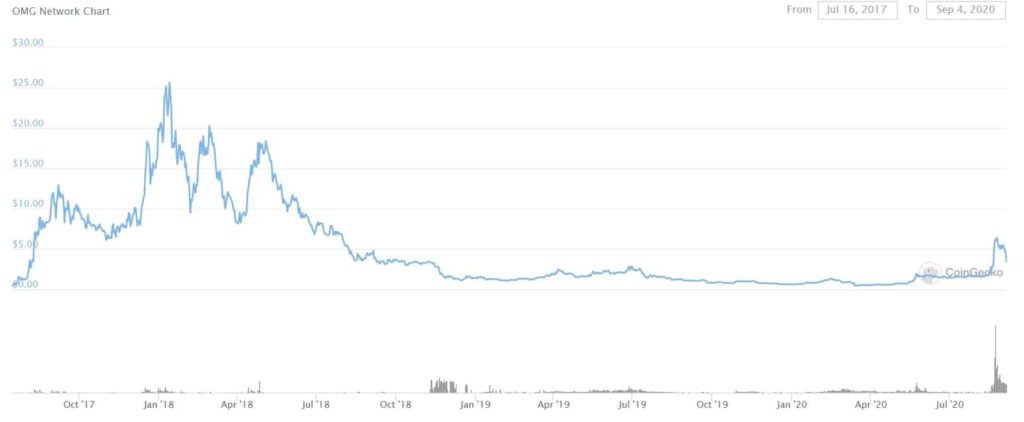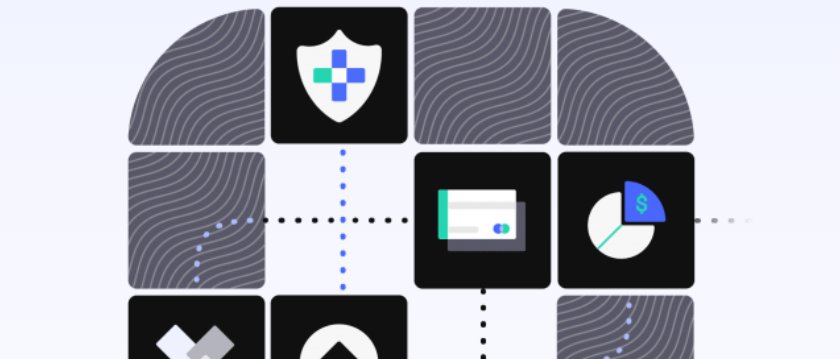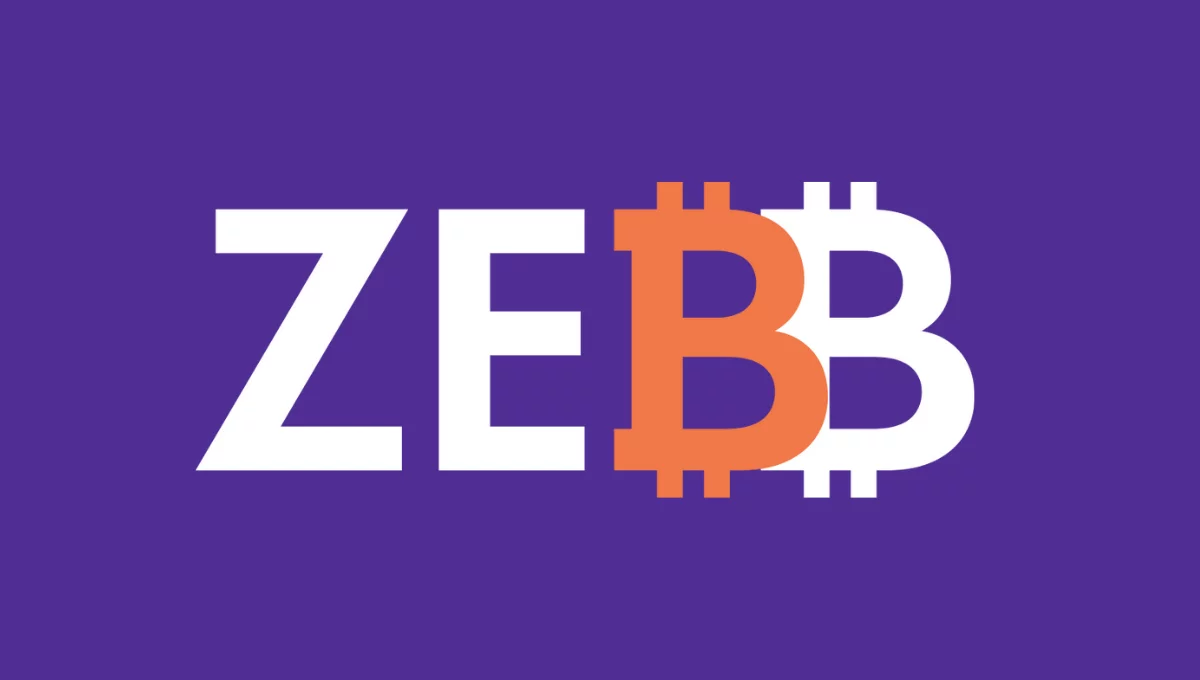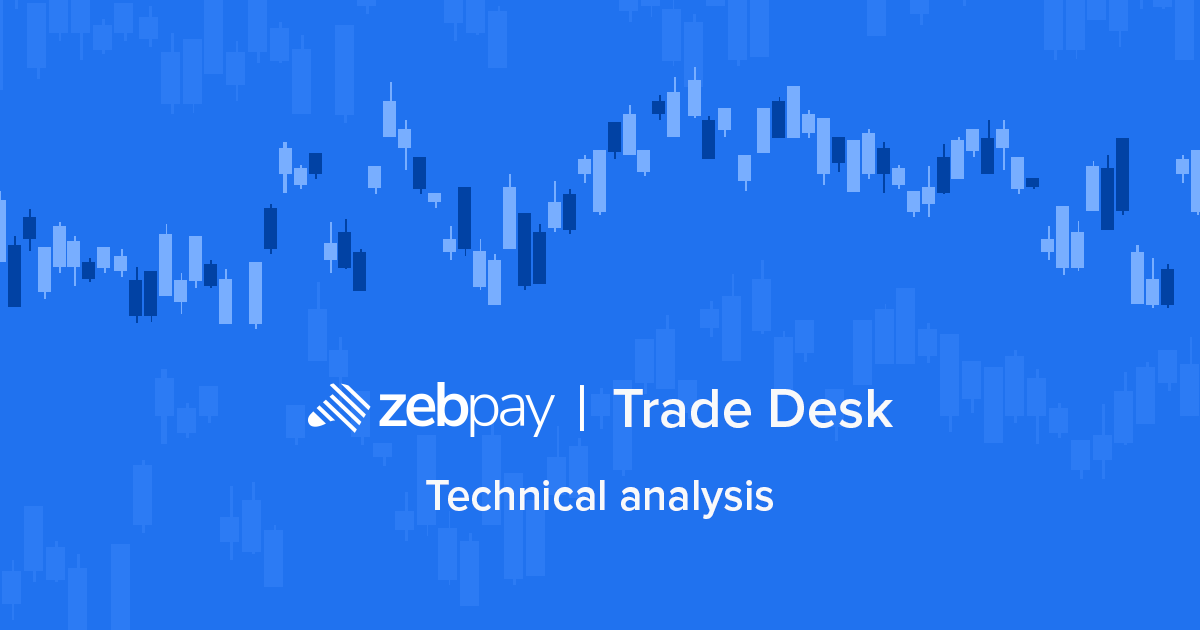OMG Network seeks to solve one of the basic problems crypto was designed to solve: value transfer. Sending value (digital assets) from one place to another with total freedom is part of why Satoshi Nakamoto created Bitcoin and crypto assets to begin with. But moving digital value from one blockchain to another can be slow and expensive. People often find the speeds are slow and the fees are high.
OMG Network seeks to make transactions between blockchain ecosystems faster and cheaper by creating a value transfer layer on top of the Ethereum network that bundles transactions together. The OMG token saw a resurgence in August 2020 when Tether announced that USDT had gone live on the OMG Network.

With one of the most popular stablecoins on board, OMG received a huge boost in credibility and interest.
How does OMG Network make transactions faster and cheaper?
The OMG Network seeks to solve this problem by creating a value transfer layer on top of the Ethereum network that bundles transactions together in batches and sends these compressed batches to the Ethereum network. They call this network More Viable Plasma. By sending the transactions in batches instead of one at a time, the plasma network enables much faster transaction processing at a fraction of the cost.
Think of it like carpooling
Think of a single transaction as a passenger. If each passenger who wants to go from A to B takes their own car, then you have a lot of cars on the road. This leads to traffic jams and slowdowns. And since each of those cars is consuming gas (petrol), the combined fuel costs would be high. The whole process is slow and expensive. Now imagine if those passengers carpool. With carpooling, you have fewer cars on the road and less petrol being burnt. And all the passengers still get from A to B. This is like the OMG Network’s plasma bundling transactions into batches. More speed, less cost. And all the transactions still get completed.
How fast? How cheap?
According to OMG Network themselves, plasma scales Ethereum from the usual 14 transactions per second to thousands of transactions per second by compressing them into bundles. They claim that transactions on the OMG Network cost three times less than on Ethereum and long-time users have confirmed this. And since it uses the underlying security of Ethereum itself, transactions on OMG are secured by the same smart contract properties and decentralized network.
OMG: lean and green
Because plasma reduces the gas fees for transactions, it also reduces the amount of electricity required. OMG Network claims it could reduce electricity consumption as much as 99%. Critics of proof-of-work and other CPU-based protocols often point to the amount of electricity consumed. Burning fossil fuels to power cryptocurrency does seem like a contradiction. Greater transaction efficiency can also be good for the planet. Crypto enthusiasts who care about climate change like the electricity savings of OMG.
This is what the OMG Network is aiming to offer: lower costs, faster transaction processing, and a better carbon footprint. Since 2017 they have had some stumbles and also recovered. The OMG token which powers the plasma network surged in 2018 after its launch but then went flat for over a year. August 2020 saw a resurgence of interest in the token and a bump in price.
ZebPay was planning to delist OMG tokens but after an outpouring of feedback from our members, we have relaunched active trading on OMG tokens starting on 4 September 2020.
If you already had OMG tokens in your ZebPay wallet, login now and check the price. You may see a nice bump over the last month. And if you’re just now looking into OMG, check out this video from the creators of OMG Network.




